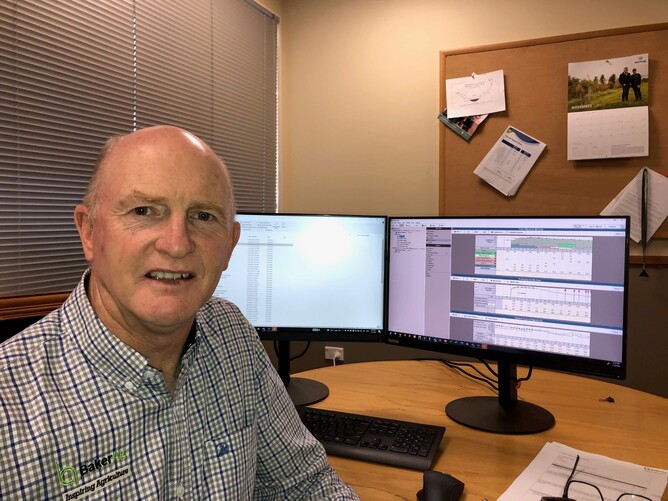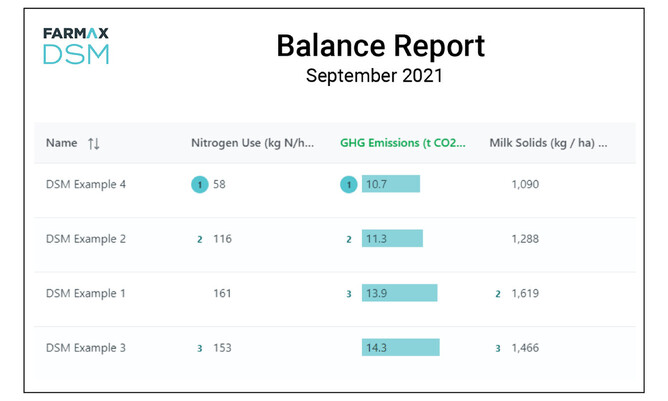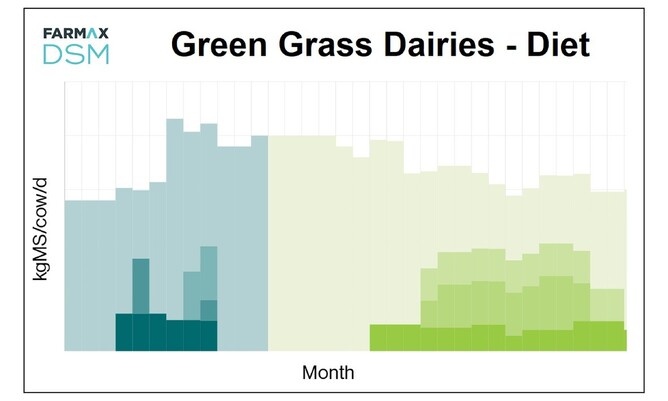The origins of FARMAX DSM go back to 1999 in a discussion group run by Chris Lewis of BakerAg, where his farmer clients wanted an “apples for apples” comparison that showed them how their farms were performing.
Back then, they were doing some analysis of physical and financial performance, but all the information was historic. And while that did give farmers a good indication of how they had been performing previously, it was all “rear-view mirror”, and they were determined to find out “how can we do this in a way that looks out the front windscreen?” explains Chris.
“We don't want to hear about this information when it's too late to do anything about it. Let's actually get that information in a way that is current, that is live. That actually tells us about the season we're in?”
When BakerAg started working on DSM powered by FARMAX, Chris was able to inform his clients on their current performance at that point in time and how the rest of the season might look.
Chris says they have gained a very loyal following with the rich and insightful data they deliver each month.
“They were following because it gave them a way of understanding right now, apples for apples, with confidence from a systems-based approach to validation; it was a tested way of saying, how efficient am I? How well is my farm system performing? And what are my peers doing?” says Chris.
Using FARMAX also means that farmers can have a plan for the year and see how they are tracking against it, all the while getting valuable benchmarking information. The tool says: “this is the variance from the plan and this is why. How am I performing and how do I understand where my opportunities are? If I make a mistake along the way, what went wrong, because sometimes it's disguised, and what do I do to get myself back on track? For our farmers, that's the sell.”
The information Chris and his farmers get out of DSM is extremely valuable, but it still takes hard work and precision when entering the data to ensure that what comes out is accurate and reliable.
“We run a discipline within our client base that says if you don't get your data to us within the first five working days of the new month you don't get a report. We had a rule we wanted a turnaround within seven working days, so essentially by the end of the following working week we were giving people reports,” says Chris.
The original DSM program born in 1999 was revolutionary for the time, but very manual, finicky and time-consuming, with data being moved from one spreadsheet to another and then reports being pulled out manually, one by one.
The recent updates to DSM are saving consultants even more time, as when monthly data is entered into FARMAX it also flows through to DSM. The flexibility of the system now enables consultants and farmers alike to narrow down measurements and indices according to current issues, geographic regions and more.
“The next big gain with the good work that's been done by FARMAX to date is the ability to draft off different groups or use different criteria or mix of indices. When we built the database it took quite a lot to build the reports and then that report was inflexible!” explains Chris.
“[Now] the reporting process is empowered and what we can report – the groups, the subgroups that we can draft out and we've only just started utilising this tool. We've touched the tip of the iceberg and even in its current form there's still more we can and will do with it.”
A future focus for Chris is establishing consistency across the different firms that use DSM and then creating an industry standard for a forward-looking benchmarking service – one that will still give farmers important information about the season they are in.
“We are creating really important industry benchmarks in a better, more live way. This is revolutionary. A really simple example is that we know there is an inflationary pressure right at the moment within our farming, there's costs going up all over the show.
“I don't want to wait until 1st of July next year to know what that effect is. We've got the ability with the modelling in FARMAX to combine the physical changes and the financial changes and the milk price changes, and we've got the ability to bring that together,” Chris asserts.
Today, there are hundreds of DSM farms throughout the country, monitored by consulting firms BakerAg, MacFarlane Rural Business and AgFirst Waikato, but Chris believes that more consultants need to get onboard and deliver this exciting service to their clients.
“If you think with an industry good head, DSM coupled with FARMAX is going to have the ability to tell us what’s on the road ahead, the front windscreen. And it will give really important wake up calls from farmer to processor to politician. Everyone will have the ability to be seriously updated if we get this tool pulling together the way it should.
“It's going to need some rules, it's going to need some alignment amongst the firms using this tool, but there's fair reason to be excited by what this can do for us.”
And Chris says there are plenty of other reasons why consultancies should invest in the DSM tool too. He asserts that with consultancy firms growing, it is a good opportunity to give new staff something meaningful to sink their teeth into that will add serious value to the business.
DSM is great way to provide robust, valuable information to clients in a timely manner, all while growing your team and making a profit.
“You need good people, you need good services and you need good tools. This is the way for anyone growing their business, bringing new people into their business, this is the way to really add value.
“It’s a great tool in an ever-expanding technology-based toolbox for dairy farm consultants.”



